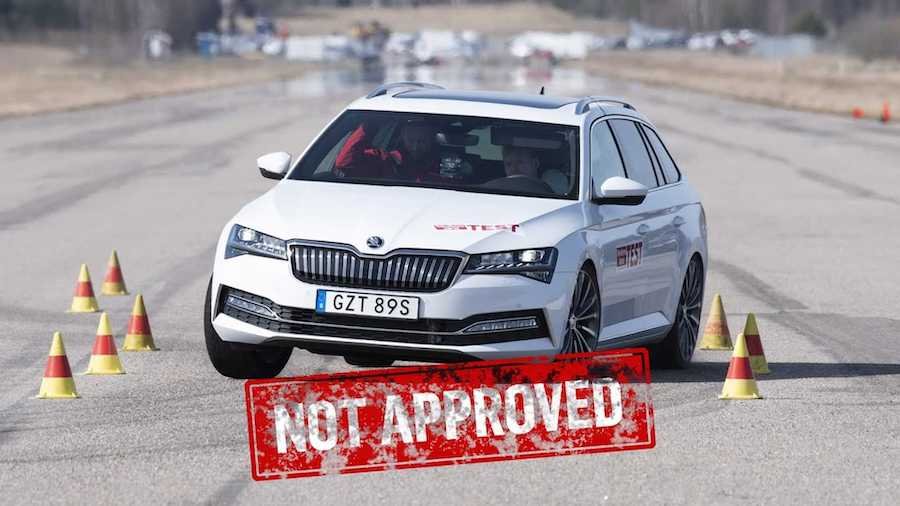2020 Skoda Superb iV, VW Passat GTE Fail The Dreaded Moose Test

Often associated with SUV rollovers and tire blowouts, the fearsome moose test is aimed to evaluate a vehicle's ability to suddenly swerve around an unsighted obstacle. The test can show all aspects of vehicle dynamics in a very short stretch of time. Done well, the moose test can look rather uneventful, but done badly it can result in a rollover situation and cone destruction.
Starting with the Skoda Superb, at 40 mph (65 kph) it only flattened one of the many cones on course. However, in doing so the car showcased its dismal handling characteristics. It exhibited understeer on entry, oversteer on exit, and it failed to avoid the imaginary obstacle. While not as bad as some moose tests we've seen, it appears the biggest obstacle for the Skoda is dealing with its body weight and form factor in these high-intensity cornering maneuvers.
Many will say these faults are par for the course with bigger vehicles, however the video also showcased very successful results from similarly sized models like the Peugeot 508 and Mercedes C-Class. Both were much more composed at higher speeds than the Skoda. The Mercedes breezed through the test at 46 mph (74 kph) and the Peugeot at 48.5 mph (78 kph).
Fortunately, the Volkswagen did mildly better than the Skoda but still performed quite poorly. The same characteristics of grabby understeer on entry and oversteer on exit could be seen in the Passat. With all of these unfortunate handling errors, the Volkswagen could only successfully complete the course at 42.3 mph (68 kph).
Even though the Mercedes and Peugeot blitzed the test, it shows that understeer is much safer than oversteer for road applications. While understeer is seen to slow you down in racing, it proves to be much more controllable for those that have less car control.
Related News
